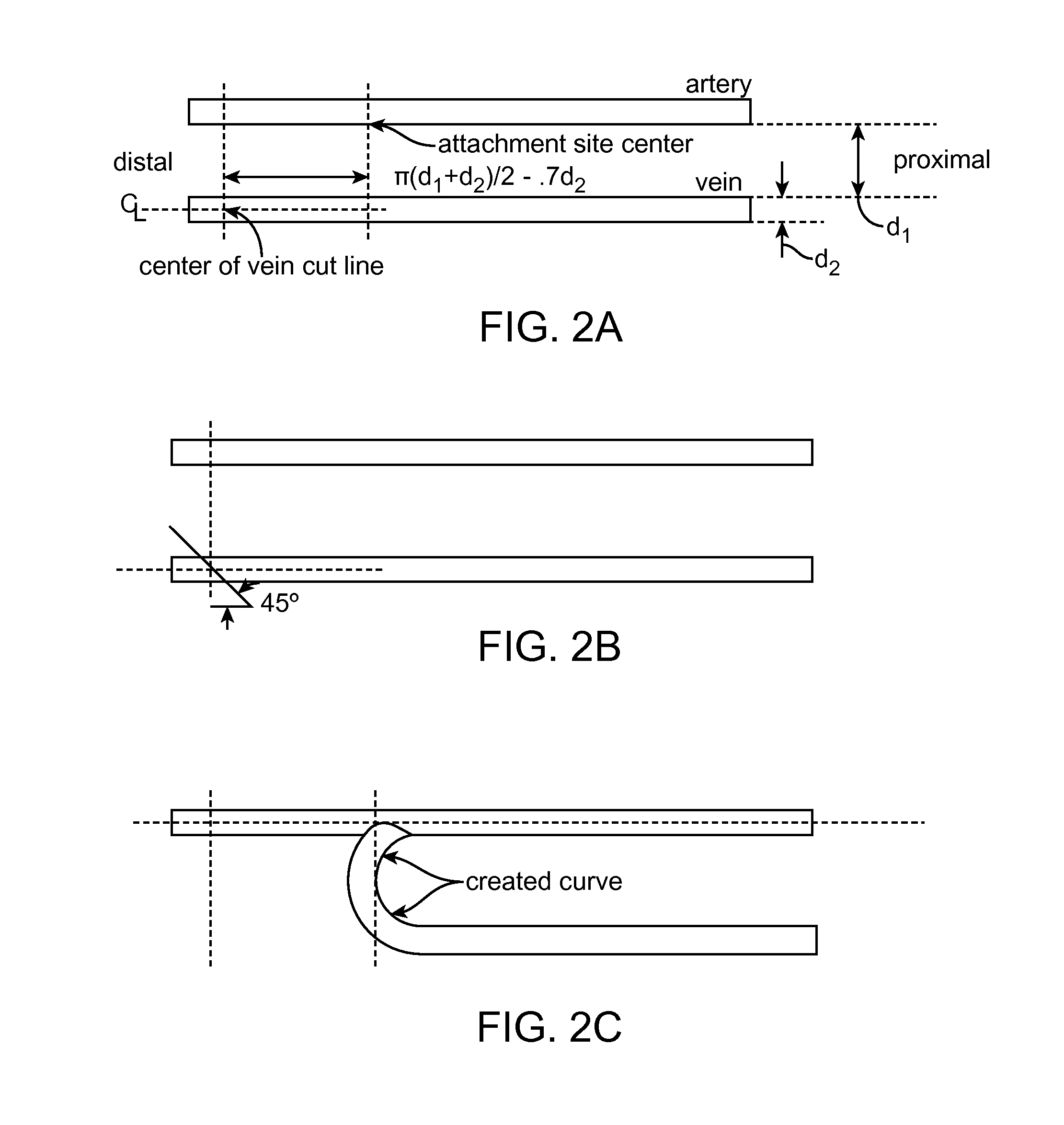Extravascular devices supporting an arteriovenous fistula
a technology of arteriovenous fistula and extravascular device, which is applied in the field of implantable medical devices, can solve the problems of loss of (or poor) patency of the attachment site, eventual failure of the fistula, and low flow, and achieve the effect of less acceleration of flow and increased patency
- Summary
- Abstract
- Description
- Claims
- Application Information
AI Technical Summary
Benefits of technology
Problems solved by technology
Method used
Image
Examples
Embodiment Construction
[0074]For purposes of this disclosure, the following terms and definitions apply:
[0075]When referring to a vein or artery prior to making a fistula, a “proximal end” refers to an end closest to the torso of the body, whereas a “distal end” refers to the end furthest from the torso of the body. In contrast, after the fistula is made, when referring to a medical device's intended location relative to a fistula or anastomosis, the terms “proximal” and “distal” are instead made with respect to the relative location of the fistula or anastomosis. Thus, for example, the end of a scaffold closest to the fistula will be called the “proximal” end and the end furthest from the fistula the “distal” end. Thus, generally speaking, prior to making the fistula the former terminology is used. And after the fistula is made “proximal” and “distal” always refers to a location relative to the fistula.
[0076]A “curvilinear form”, in reference to a description of a shape of a space, or nature by which edg...
PUM
 Login to View More
Login to View More Abstract
Description
Claims
Application Information
 Login to View More
Login to View More - R&D
- Intellectual Property
- Life Sciences
- Materials
- Tech Scout
- Unparalleled Data Quality
- Higher Quality Content
- 60% Fewer Hallucinations
Browse by: Latest US Patents, China's latest patents, Technical Efficacy Thesaurus, Application Domain, Technology Topic, Popular Technical Reports.
© 2025 PatSnap. All rights reserved.Legal|Privacy policy|Modern Slavery Act Transparency Statement|Sitemap|About US| Contact US: help@patsnap.com



